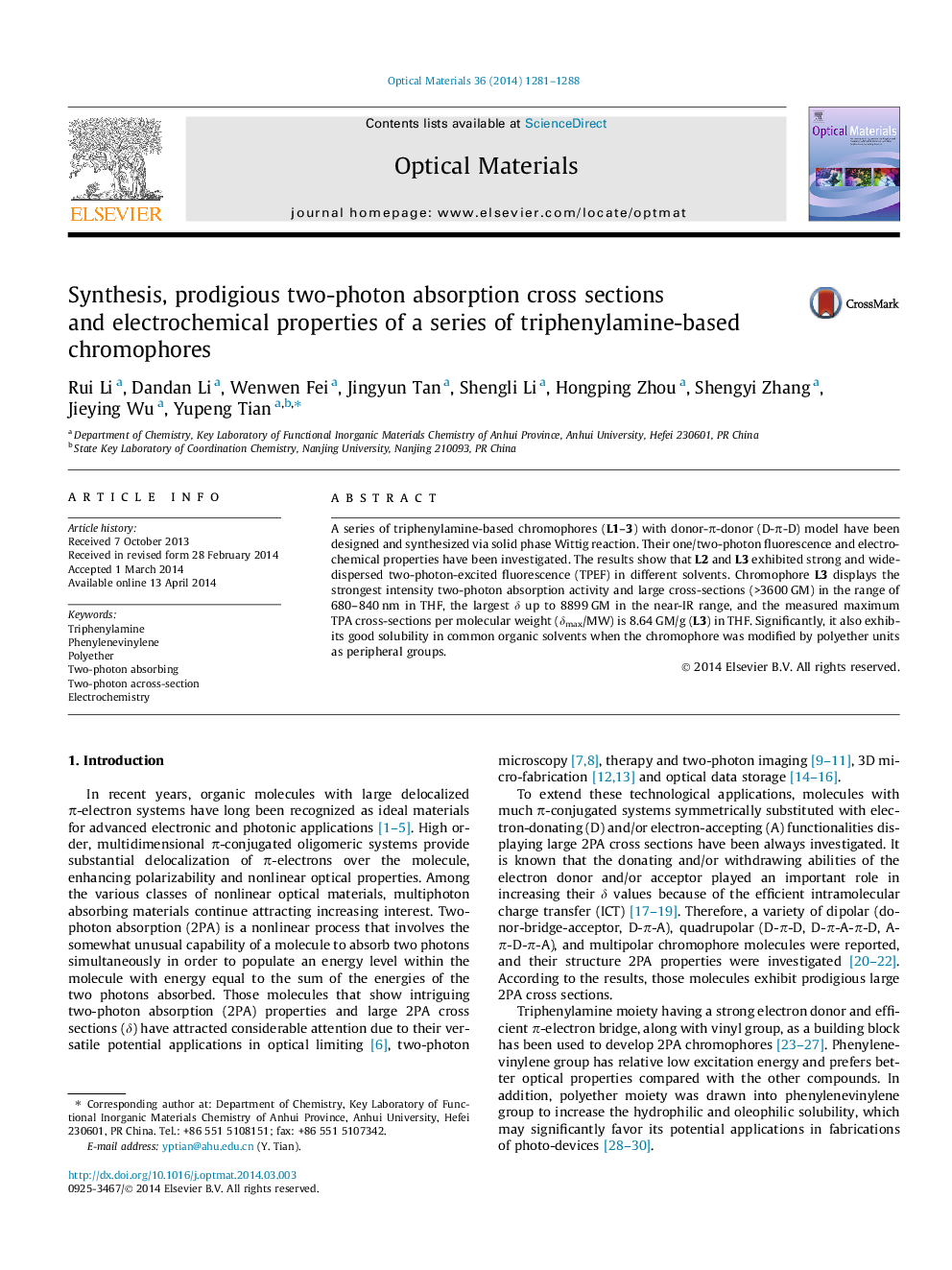| Article ID | Journal | Published Year | Pages | File Type |
|---|---|---|---|---|
| 1494629 | Optical Materials | 2014 | 8 Pages |
•The chromophore of L3 exhibits good solubility in common organic solvents.•The chromophores (L1–3) exhibit large two-photon absorption.•The largest cross-section (δ) of L3 up to 8899 GM in the near-IR range.•The δmax/MW of the chromophores are 2.12 GM/g (L2) and 8.64 GM/g (L3).
A series of triphenylamine-based chromophores (L1–3) with donor-π-donor (D-π-D) model have been designed and synthesized via solid phase Wittig reaction. Their one/two-photon fluorescence and electrochemical properties have been investigated. The results show that L2 and L3 exhibited strong and wide-dispersed two-photon-excited fluorescence (TPEF) in different solvents. Chromophore L3 displays the strongest intensity two-photon absorption activity and large cross-sections (>3600 GM) in the range of 680–840 nm in THF, the largest δ up to 8899 GM in the near-IR range, and the measured maximum TPA cross-sections per molecular weight (δmax/MW) is 8.64 GM/g (L3) in THF. Significantly, it also exhibits good solubility in common organic solvents when the chromophore was modified by polyether units as peripheral groups.
